Ever wondered how an ant colony thrives without a leader? It’s a perfect model of decentralized efficiency. But what if AI could work the same way? Imagine multiple AI agents, each doing its bit, yet all in sync — that’s the magic of multi-agent systems. 🤖
AII has gone a long way from Alan Turing’s breakthrough work and the 1956 Dartmouth Conference where the term was born. We’ve watched IBM’s Deep Blue checkmating Kasparov and Google’s AlphaGo cracking Go’s code. But that was AI doing solo gigs.
In today’s article, we take a look at long-running AI agents and autonomous multi-agent systems. You’ll learn why AIs and humans work together (spoiler: it’s not as dystopian as it sounds), and how Taskade can help you deploy our own AI agents to get more done.
💡 Before you start… New to AI? Check these articles to get up to speed:
👥 Understanding Multi-Agent Systems
Basics of Multi-Agent Systems (MAS)
In the 1990s, a group of researchers created the “Robot World Cup Initiative.” The goal? Advance AI by building humanoid robots that could one day win a soccer game.
Fast forward three decades, the RoboCup participants are still eerily clumsy (as one would expect), at least compared to flesh-and-blood players. But there is something uncanny in the way a bunch of plasticky robots can collaborate on a shared objective.
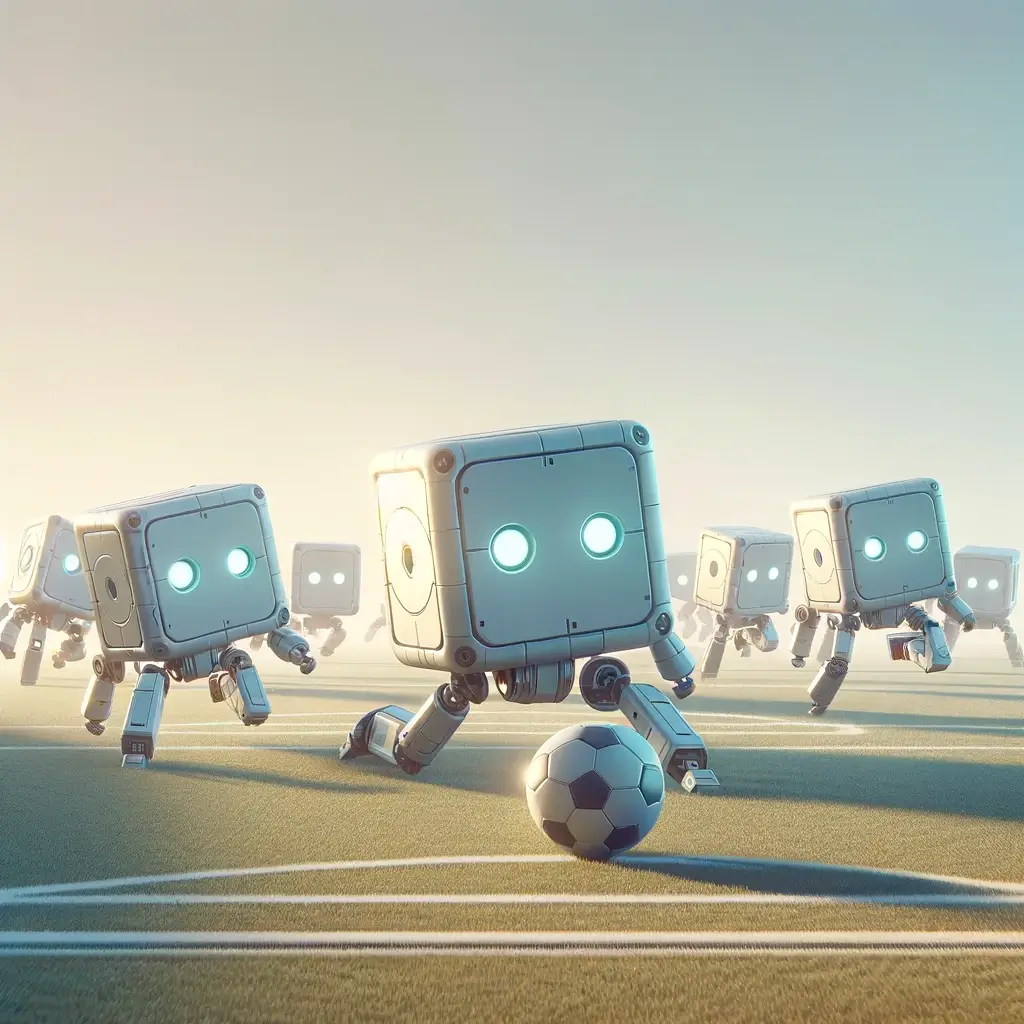
On the surface, the idea of multi-agent systems (MAS) is simple. It’s a system of agents, organic or otherwise, that, within a specific environment, can work together on a task.
What is an agent then?
In Artificial Intelligence: A Modern Approach, computer scientists and AI researchers Stuart Russell and Peter Norvig define an agent as: “Anything that can be viewed as perceiving its environment through sensors and acting upon that environment through actuators.” That can apply to humans, robots, software programs, and… artificial intelligence. And that’s where it gets interesting.
As imperfect as they are, groups of people collaborating on common objectives are a marvel of natural interaction, decision-making, and adaptation. Mix productive discussions, add strategic coffee breaks blended with occasional team bonding, and there you have it: a volatile mix leading to a productive flurry (most of the time).
Multi-agent systems attempt to reverse-engineer those social interactions by bringing together clusters of specialized AI agents — powered by language models (LLMs) — working together to complete set objectives in a more or less autonomous way.
But how did we get here? 🤔
🚀 From MAS to GPT Agents Frameworks
Back in the 80s, the concept of agents was, well, pretty basic. Think of the chatbot Eliza — a neat attempt at a conversational partner, but not much beyond basic mimicry.
By today’s standards? Adorably primitive.
The big change came with the concept of Generative Pre-trained Transformers (GPTs) developed at Google in 2017. GPTs opened the door to more advanced AI systems that could learn from massive pools of training data and generate eerily responses.
It took 5 years before GPTs were mature enough — with OpenAI’s GPT-3 leading the way — to bring the concept of agents and agent architecture back on the stage.
With the launch of large language models like GPT-4, the agent scene exploded. Partly because of the innate flaws of LLMs — hallucinations and a need for human oversight — and partly thanks to a paper “Task-driven Autonomous Agent” by Yohei Nakajima.
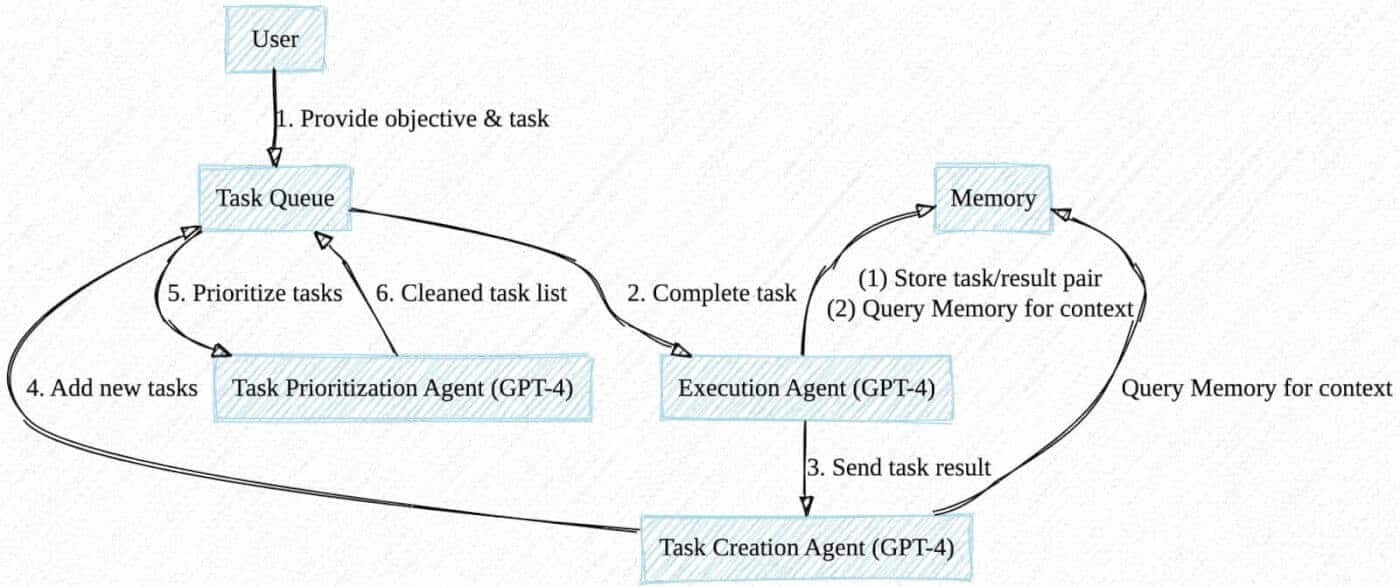
Source: https://yoheinakajima.com/
The main purpose of AI agents, as laid out by Nakajima, is to act as “decision-making engines” for LLMs. Agents work in self-directed loops, defining tasks for AI models. The result? A Nolan-esque twist on automation where AI agents, well, automate prompting and reprompting of LLMs to meet overarching objectives set by the user.
In a nutshell, agents take what regular AI models do and kick it up a notch, making everything more streamlined and on point. That includes tasks like:
| 🔢 Extracting and analyzing data | ✏️ Generating human-like content |
| 💡 Brainstorming ideas | 🔎 Conducting research |
| 🧩 Solving problems | ✅ Organizing and prioritizing tasks |
| 🗂️ Managing resources | 💭 Translating between languages |
…and much more.
The possibilities here are endless. You can use agent frameworks to automate routine tasks in your business, kick off all kinds of personal projects, and supercharge your productivity across the board. That’s as long as you have the technical know-how.
The good news is you can create your autonomous AI team using Taskade. 👇
🐑 Taskade as a Multi-Agent System Simulator
Are you new to Taskade? Then let’s start with a short introduction.
Taskade is an AI-powered project and task management platform for teams and individuals. It’s also the only tool of its kind that allows you create your own, autonomous AI team — all seamlessly integrated with the core workflow, no coding required.
Sounds cool, right? Here’s how it works.
Creating Autonomous Teams in Taskade
Taskade AI Agents are designed to streamline activities like research, advanced task management, and content creation. Every agent is customizable and shareable, which means that you can easily automate your entire workflow without juggling several tools.
Let’s start with the basics.
To create your first agent, all you need to do is open the Agents tab in your workspace, click ➕ Create agent, and decide how you want the agent to behave.
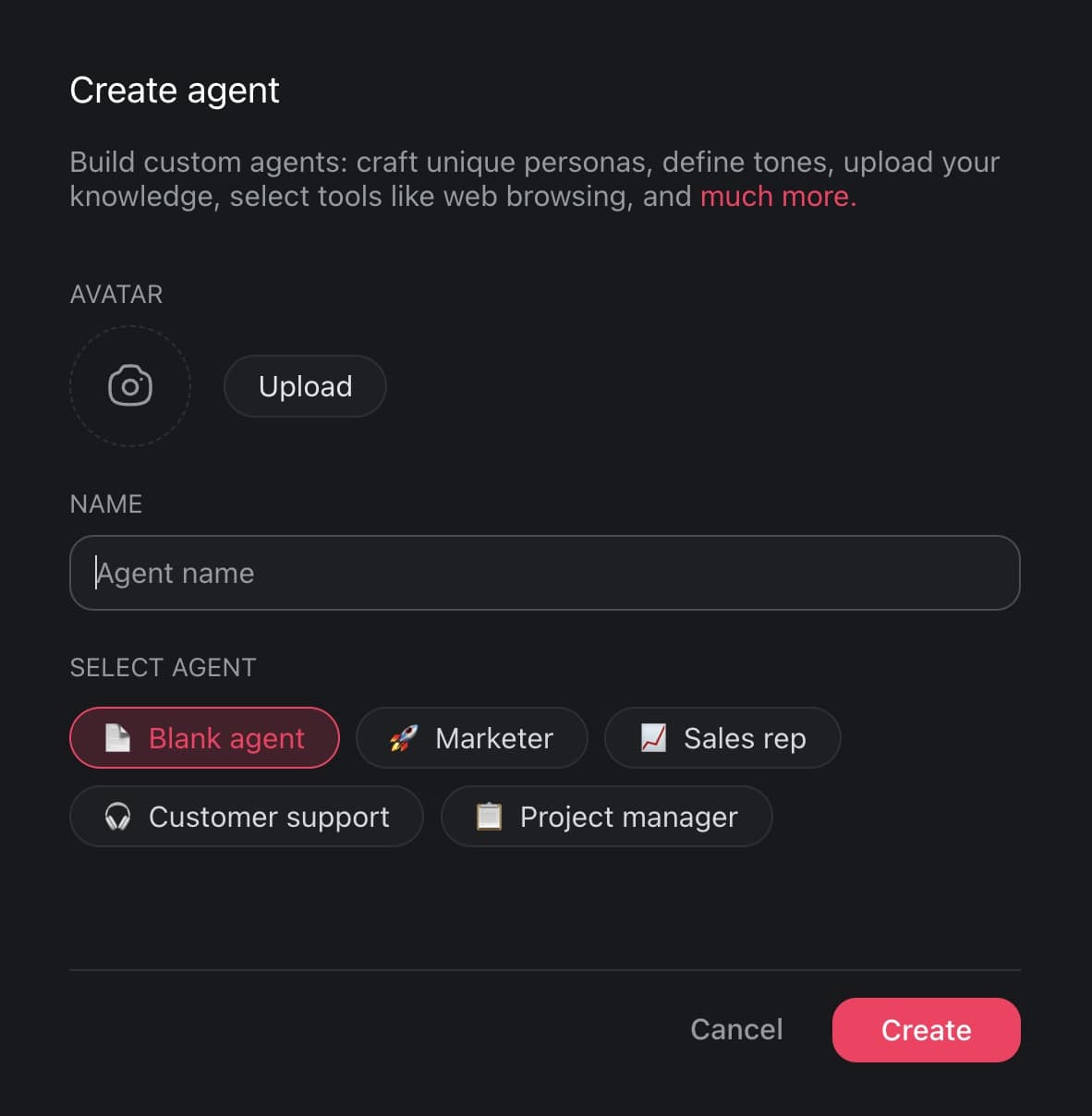
An agent is defined by a set of characteristics. It can have unique skills, “personality,” knowledge based on online resources and uploaded documents — you can train agents using .docx, .txt, .pdf, and .csv files — or plugins like WolframAlpha.
To better illustrate this, we created three agents: Researcher, Planner, and Creator. Each of these agents is unique in they way they interact with your projects.
| 🤖 Agent | 🎯 Objective | 🛠️ Skills | 🧠 Knowledge |
|---|---|---|---|
| Researcher | Gather, analyze, and synthesize information from a wide range of sources. | Advanced searching, data analysis, information synthesis, report generation. | Access to the web for real-time information, specialized databases, scientific journals, news archives, etc. |
| Planner | Organize, strategize, and develop comprehensive plans for various objectives. | Strategic planning, scheduling, resource allocation, risk assessment, contingency planning. | In-depth knowledge of project management frameworks, resource management software, and strategic planning tools. |
| Creator | Generate original content based on specific requirements or creative briefs. | Creativity, content creation, design, problem-solving, adapting to different formats and media. | Access to existing marketing materials, style guides, and samples of successful content. |
Let’s say you’re launching a new product. That means a lot of marketing work.
You need to dig into trends and customer preferences, map goals, whip up blog articles and videos, and time everything just right. Easy, right? Instead of spending hours getting your bearings, you can put your new AI team to work while you sip your coffee. ☕
Simply set up a new project, define your product, and assign each agent to a task.
The agents will tap into their knowledge, run web searchers, and structure each part of your fledgling marketing plan. All you need to do is sit back and relax.
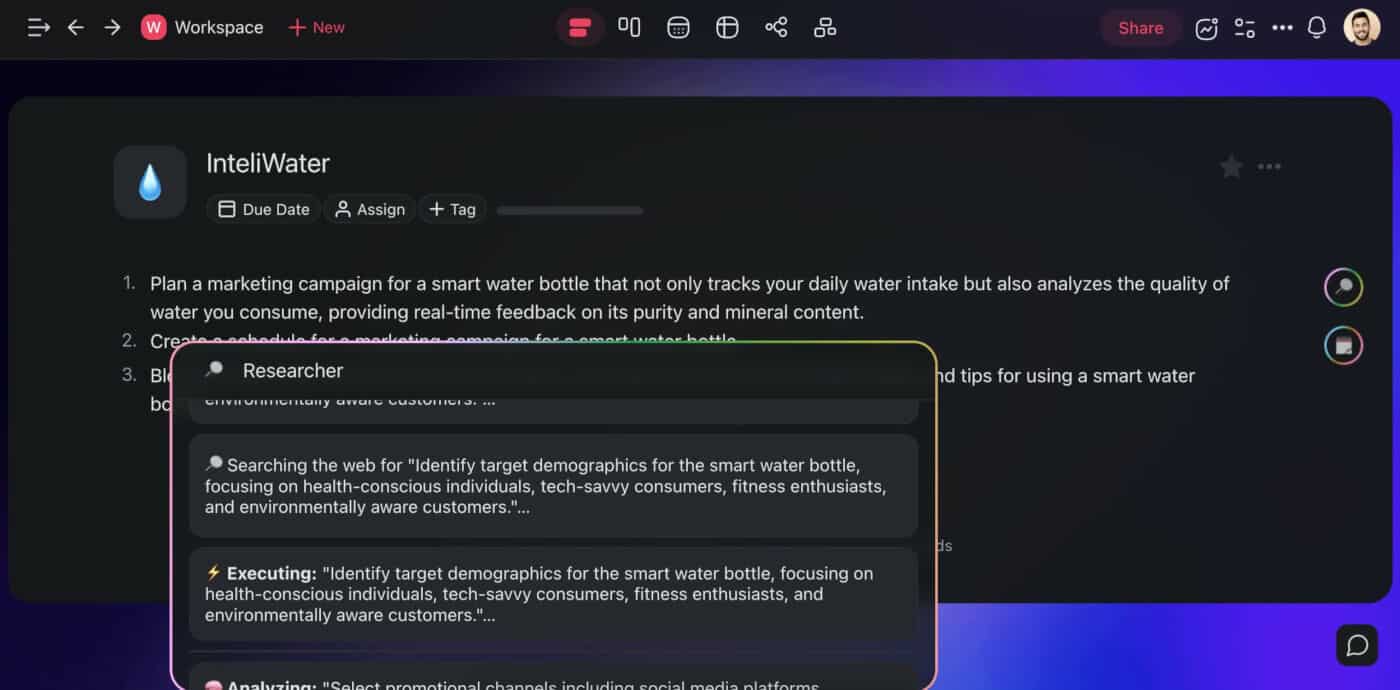
Of course, you can customize your AI team any way you like.
Whenever you start a new project, you can deploy new agents, craft unique commands, and train your agents with fresh knowledge. This multi-agent approach unlocks a more dynamic and comprehensive approach to managing complex projects.
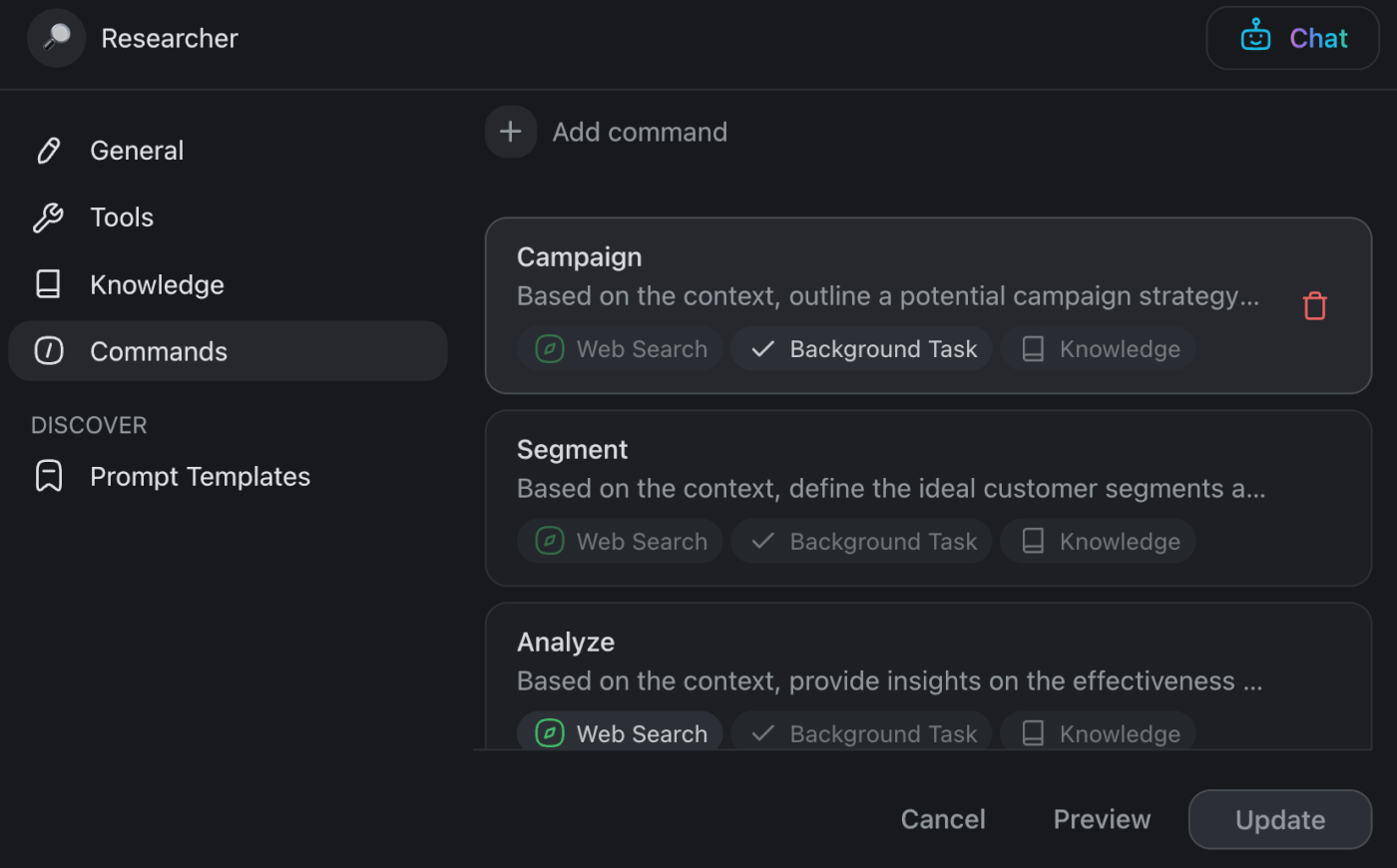
Taskade’s AI-Powered Features
Custom AI agents are part of a larger AI toolbox 🧰 you can use in Taskade. So while your agents are working hard on the marketing plan, let’s lear a few more tricks.
First, the AI Assistant — your productivity sidekick. ⚡️
The assistant “lives” inside every project and helps you brainstorm ideas, edit documents, and organize content. All you need to do is type / + one of the available AI commands. You can also call your custom GPT Agent commands this way.
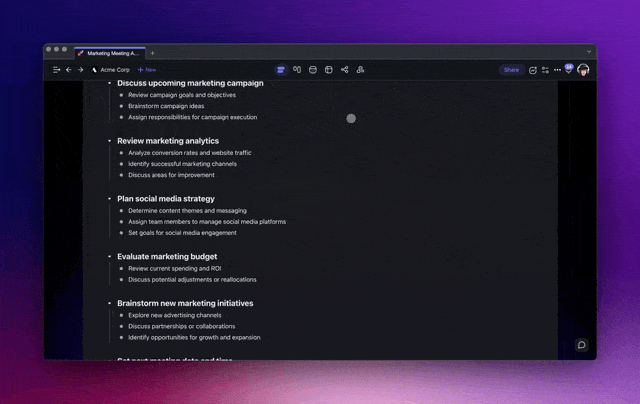
The AI Chat works like any other conversational AI tool. It’s your go-to for quick queries, brainstorming sessions, or the times when you need a creative nudge. Just start a chat, ask questions, and Taskade AI will generate context-aware insights and suggestions.
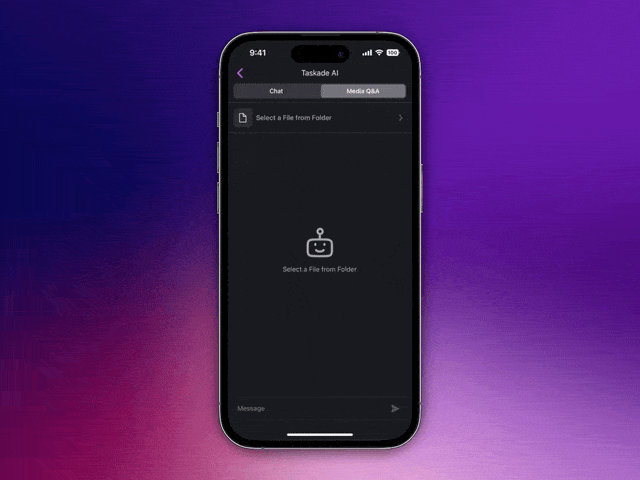
Finally, the Workflow Generator lets you generate mind maps and content blocks, create lists of tasks, and even structure entire projects. All that based on natural-language prompts. It’s the best tool to kick off all kinds of projects, documents, and workflows.
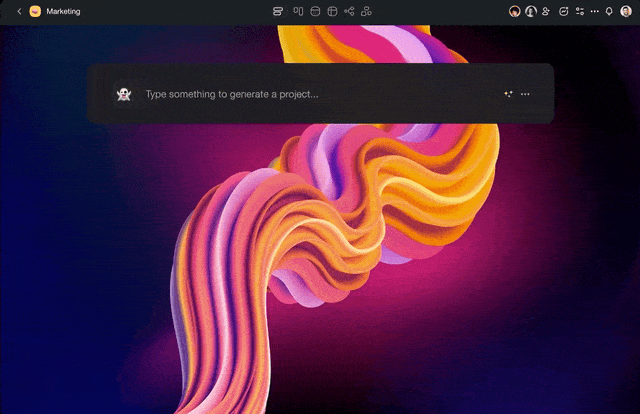
🚀 Advantages of Using Taskade for Team Autonomy
Intuitive Agent Creation and Deployment
There is a running joke among programmers that spending days trying to automate a task that can be done manually in minutes is the height of efficiency. It’s the tech version of “working smart, not hard,” with a side of self-inflicted irony.
The ultimate goal? To save a collective 10 minutes of precious time… eventually.
Agent architecture IS a big thing for task and project automation. As long as it’s quick to set up and intuitive to use — that means no coding or grappling with clunky workflows.
Taskade GPT agents can be as simple as a set of commands to speed up editing. But they can also be as complex as automating entire workflows, from research and data analysis to content planning and creation. Quick setup, big impact.
Seamless Integration with Existing Workflows
AI agents are still a new concept. They are experimental, and for the most part, isolated from existing workflows. With Taskade, agents work alongside you and your team.
Agents are like team members you can chat and interact with. They are available globally, across all projects in a workspace or folder. Whenever and wherever you need them.
Agent ubiquity also means that you can quickly recycle agents as needed. You don’t need to reinvent the wheel or start from scratch every time you kick off a new project.

Need to shift focus or tackle a new challenge? Open a blank project, define taks, and agents will simply adapt to the new context. Want to overhaul your workflow? Adjust agent instructions or add new ones to fit seamlessly into the revamped process.
Shareability and Agent Collaboration
In most teams, resources are limited. There is only so much you can do before running out of steam or spiraling down the rabbit hole of multi-tasking (psst… it doesn’t work).
And on any given day, countless miscellaneous, routine tasks need to be done.
Scheduling meetings, organizing client data, updating project timelines, managing emails, tracking project progress, synthesizing research findings… The work never ends.
Agents are a force multiplier, doing the heavy lifting while you focus on the big stuff – creating great products, nurturing customer relationships, and driving innovation. And they do that collaboratively, working as a team, all in perfect synergy.
And the best part?
Taskade agents are easily shareable. Got a teammate swamped with scheduling? Hand them the scheduling agent. Another team drowning in data? Toss them the data analysis agent. It’s like having extra pairs of hands that you can lend out as needed.
🦾 Parting Words
So here we are, stepping into a world where AI not only exists on the peripheries of our perception but working alongside us and reshaping work dynamics.
Our predictions on what comes next?
The line between human and AI collaboration will blur. We’ll see a more seamless integration where ideas flow between humans and AI, each complementing the other’s strengths. The future is not about AI replacing humans; it’s about AI empowering us to reach new heights.
Here’s a short recap of what we learned today:
- ⏳ The concept of Multi-Agent Systems (MAS) dates back to the early 1980s.
- 🤝 Agents can collaborate on set tasks and objectives just like humans.
- 🧠 Generative Pre-trained Transformers (GPTs) paved the way for AI agents.
- 💭 AI agents act as decision-making engines for large language models.
- ⚡️ Multi-agent systems can streamline all kinds of workflows.
The future of work is evolving, and with Taskade, you’re not just keeping up; you’re leading the charge. Harness the power of agents and supercharge your productivity.
🤖 Custom AI Agents: Implement multi-agent systems where agents work in tandem to handle complex tasks and workflows in the background.
🪄 AI Generator: Generate documents and projects based on natural-language descriptions or by uploading seed documents to start faster.
✏️ AI Assistant: Use convenient, pre-defined /AI commands, or call your custom agents from the project editor using custom commands.
🗂️ AI Prompt Templates Library: Want to make the most of Taskade AI? There are hundreds of AI prompt templates that will help you do just that.
And much more…
Frequently Asked Questions About Multi-Agent Systems
What is an example of a multi-agent system?
A great example of a multi-agent system is Taskade, an AI-powered collaboration platform where multiple AI agents can run within projects to automate routine tasks like scheduling, data analysis, content generation, and more. Each agent works independently but collaborates with others to boost overall productivity and efficiency.
What is the multi-agent LLM system?
A multi-agent LLM (Large Language Model) system consists of multiple AI agents, each powered by advanced language models like GPT-4. Agents can perform various tasks such as answering questions, generating content, and providing recommendations. They collaborate to solve complex problems by leveraging their individual strengths and communicating insights.
What is the structure of a multi-agent system?
The structure of a multi-agent system typically includes several key components: agents, environment, communication protocols, and a coordination mechanism. Agents are the individual units that perform specific tasks. The environment is the shared space where agents operate and interact. Communication protocols define how agents exchange information. The coordination mechanism ensures that agents work together effectively.



 How to Train AI Agents with Your Own Knowledge: A Comprehensive Guide
How to Train AI Agents with Your Own Knowledge: A Comprehensive Guide 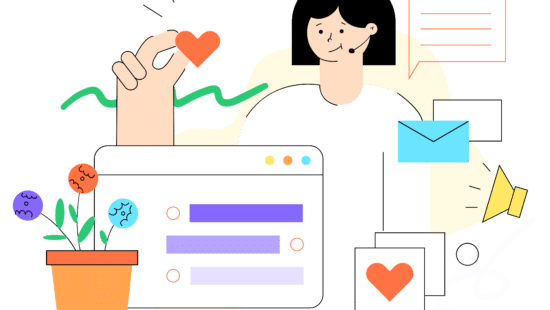 Cloning Yourself With AI: Double Yourself For Peak Productivity
Cloning Yourself With AI: Double Yourself For Peak Productivity  11 Best AI Tools For Customer Service
11 Best AI Tools For Customer Service 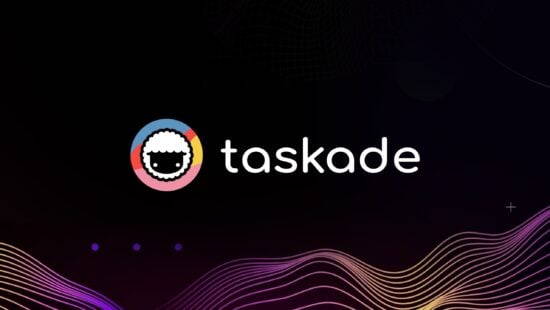 Taskade AI Agents vs. ChatGPT GPTs: The Best OpenAI GPT Alternative
Taskade AI Agents vs. ChatGPT GPTs: The Best OpenAI GPT Alternative 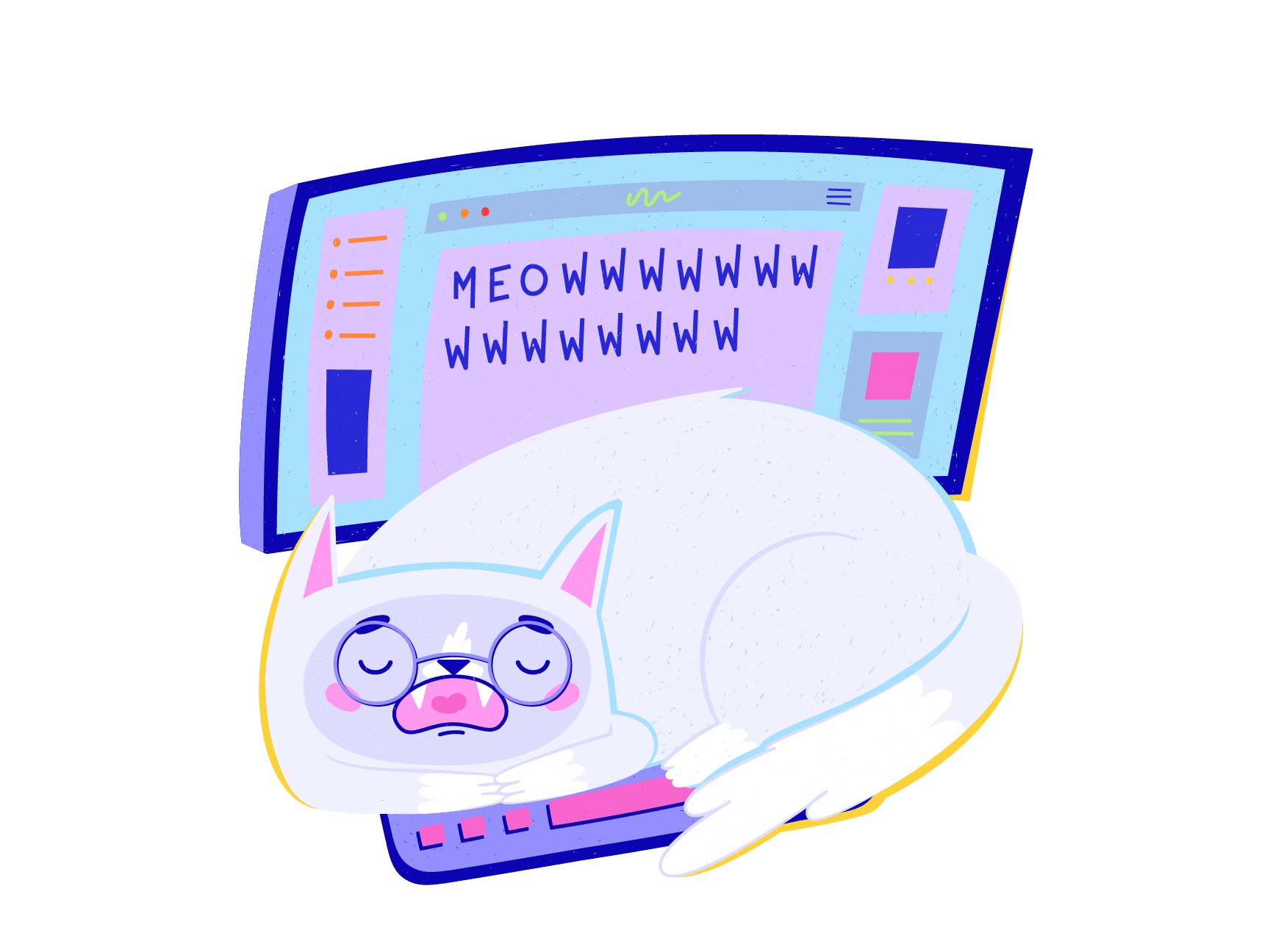 Taskade’s New Email Automation Features — Streamline Your Inbox With AI Agents
Taskade’s New Email Automation Features — Streamline Your Inbox With AI Agents  Best 8 AI-Powered Tools for Automation
Best 8 AI-Powered Tools for Automation